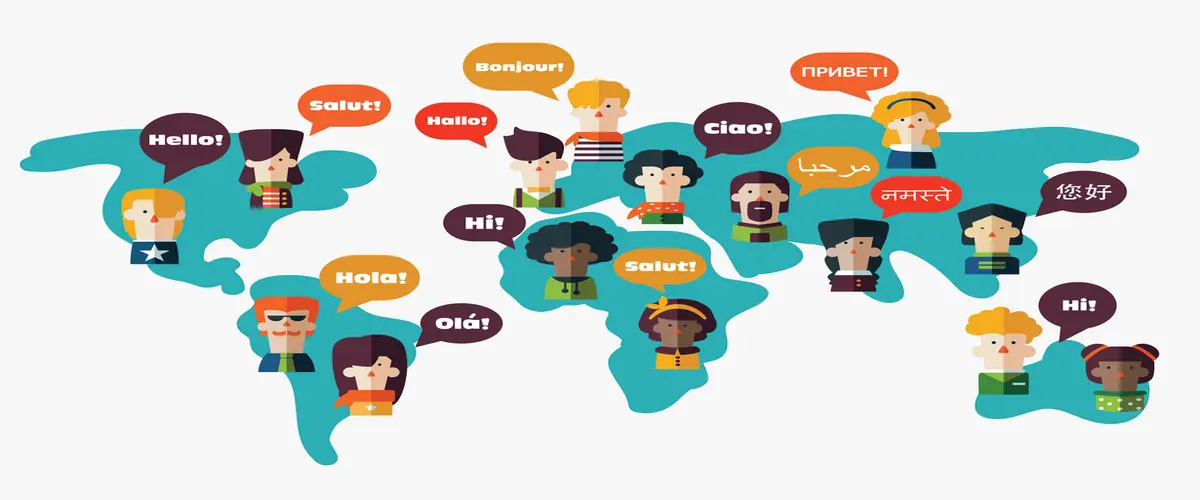It’s a project that involves the process of translating content from one language into multiple languages to cater to diverse audiences. This can include translating website content, product descriptions and marketing materials to reach global markets effectively.
For web translations specifically, the focus is on adapting digital content such as website pages, blogs and online resources to enhance accessibility and engagement for international users. Multilingual professional translation services play a key role in this process, ensuring your translations are accurate and culturally relevant.
Before project execution, the translation agency and the client need to agree on the service cost and scope of work. This ensures that the budget is aligned with your business. The agreement sets the foundation for a successful multi-language translation project, allowing for efficient collaboration and quality outcomes, tailored to specific language needs and cultural contexts.
Translation projects typically involve several stages to ensure a successful outcome. In this article, we’ll walk you through every step of the process so you understand how to achieve the high-quality translations you need to connect with global audiences.
Here are the steps involved in a multilingual translation project:
- Defining your translation project
- Selection of translators
- Content preparation
- Translation
- Revision and correction
Let’s dive in.
Step 1: Defining your translation project
The first stage is planning. This step involves defining your project objectives, the scope, target languages and timelines. Key tasks include identifying resources, establishing communication channels and outlining your project milestones. Here are some of the key things to consider for multi-language translation.
-
Objectives:
The objectives of a multilingual translation project are crucial for aligning efforts with business goals. Clearly define what you aim to achieve through translation—whether it’s expanding market reach, improving customer experience or complying with regulatory requirements in different regions.
-
Scope:
Define the scope of the project by identifying the content that needs translation. This includes web pages, documents, marketing materials, product descriptions and more. Specify the languages required and any cultural adaptations necessary.
-
Constraints:
Understand and document the constraints affecting the project. This might involve budget limitations, resource availability, technical constraints (e.g. compatibility with existing systems) or legal considerations (e.g. data protection laws).
-
Target audience:
Identify the target audience for each translated piece. Consider cultural nuances, preferences and local practices that may influence the translation. Tailoring content to your specific audiences will enhance engagement and effectiveness.
-
Delivery deadlines:
Establish clear delivery deadlines for each phase of the project. Coordinate timelines with your stakeholders to ensure timely completion. Don’t forget to factor in time for reviews, revisions and unexpected delays to minimise risks.
-
Validation instances:
Incorporate some validation instances to ensure translation accuracy and quality. This could involve internal reviews by subject matter experts, external proofreading by native speakers or user testing to gauge effectiveness.
-
CMS & multilingual plugins:
Select a Content Management System (CMS) that supports multilingual capabilities. Then implement appropriate multilingual plugins or modules to streamline the translation process. Remember to check compatibility and ease of use for translators.
-
Translation format:
Multiformat translation is crucial for improving accessibility and engagement because it allows your content to be presented in different formats to meet diverse preferences and needs. Whether it’s a PDF, XML, HTML or JSON, define the translation formats you need to maintain consistency and support localisation.
A professional translation agency specialising in digital content will facilitate your different file types. At Milega, we translate multiple web formats, including HTML, CSS and JavaScript. Simply send us your text in the format you prefer, and we’ll provide the translation in that same format. Our technical department can create specific filters that adhere to the formatting of your original documents, saving you time and money through efficiency.
Step 2: Selection of translators
Choosing the right translators for your translation can make all the difference in quality. Your multilingual linguists should be native speakers of the language they translate into, hold a degree in translation and specialise in specific areas of expertise. With a translation agency, you can be connected with a native translator who is an expert in the linguistic and cultural specificities of your industry and chosen market.
In this step, select translators who work with your source language (original language of the content) and are native in your target languages (languages into which the content will be translated). Your content is prepared for translation, ensuring that it is organised, formatted consistently and all reference materials (such as glossaries or style guides) are provided to the translation team.
At Milega, we’re more than just a translation platform connecting clients with thousands of translators. Our translators are carefully selected professionals who understand our processes and uphold our standards for the highest quality of work. Each translator in our pool holds a translation degree and is a native speaker of the target language. They prioritise accuracy in vocabulary, sentence structure and syntax, while also considering your target audience’s culture and respecting your brand image. Additionally, you’ll have a dedicated technical manager assigned to ensure that your project runs seamlessly.
Step 3: Content preparation
During this stage, your source content is prepared for translation. This involves organising files, ensuring clarity of content and providing reference materials such as glossaries, style guides and context notes to translators.
When preparing documents for translation, several key considerations ensure a smooth and accurate process. Firstly, organise your pages logically, with clear headings and consistent formatting to facilitate translation. It’s important to verify terminology upfront to align language accurately with your industry-specific terms and brand preferences.
Collecting useful resources such as glossaries, style guides and previous translations can aid translators in maintaining consistency.
Additionally, integrate documents into translation software early on to streamline workflow and ensure compatibility with the translation environment. Computer-assisted translation (CAT) tools can assist translators in many ways, like suggesting terms or phrases from previously translated texts, creating glossaries to ensure consistency and pointing out grammar and spelling errors to avoid typos.
Translation memory records (TM) are particularly valuable in projects involving repetitive content or ongoing translation work for the same client or subject matter.
The more efficiently a translator can work, the more your business benefits:
- With TMs, you can make significant savings since repetitions are not charged
- Your translated content is delivered quickly
- The document checks carried out using CAT tools guarantee impeccable results
By preparing your content thoroughly, you’ll enhance translation quality and efficiency while meeting your project expectations.
Step 4: Translation
During the multilingual translation phase of a project, professional translators from the chosen agency begin translating the content from the source language into specified target languages. They meticulously work with your source material, applying their linguistic expertise and cultural understanding to accurately convey the original meaning and tone in each target language.
Throughout this process, the translators reference translation memory records, glossaries, style guides and other resources to ensure consistency and adherence to your project requirements. The goal is to produce high-quality translations that resonate effectively with diverse audiences in different linguistic contexts.
Step 5: Revision & Correction
As translations are completed, they undergo thorough quality assurance checks. This may involve proofreading by another linguist, reviewing against established terminology and style guidelines and ensuring cultural appropriateness for the target audience.
Once it’s passed the quality assurance stage, the translated content is validated through reviews and feedback loops. This can involve internal stakeholders or subject matter experts reviewing the translations to ensure accuracy, clarity, and alignment with your project objectives.
The finalised translations are integrated into the desired format (e.g. websites, documents, software) and delivered to the client, ready to be published for use.
By following these 5 steps systematically, and enlisting a translation agency with experienced professional translators, your business can effectively manage multilingual translation projects and achieve your goals across diverse markets and audiences. Each stage plays a critical role in ensuring the quality, accuracy and cultural relevance of translated content.
Choosing the right translation partner
At Milega, we specialise in helping companies expand internationally. We blend expert translators with cutting-edge technology and AI for high-quality web translations while ensuring maximum data protection.
Whether you need content localization, transcreation, SEO translation, post-editing or revision, our translation services are customised to meet your unique requirements. Managing a translation project can be complex, but at Milega, we simplify it by providing everything you need for quick and efficient results.
We offer translation services in 45 languages, including popular language pairs like:
- English to Spanish
- English to French
- English to Dutch
- English to German
Our core team of 60 translators and a larger network of 700 multilingual linguists are on hand to translate your content.
Ready to explore your translation project with Milega? Get in touch with us today.







